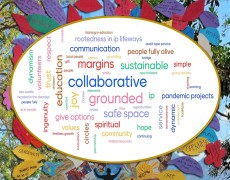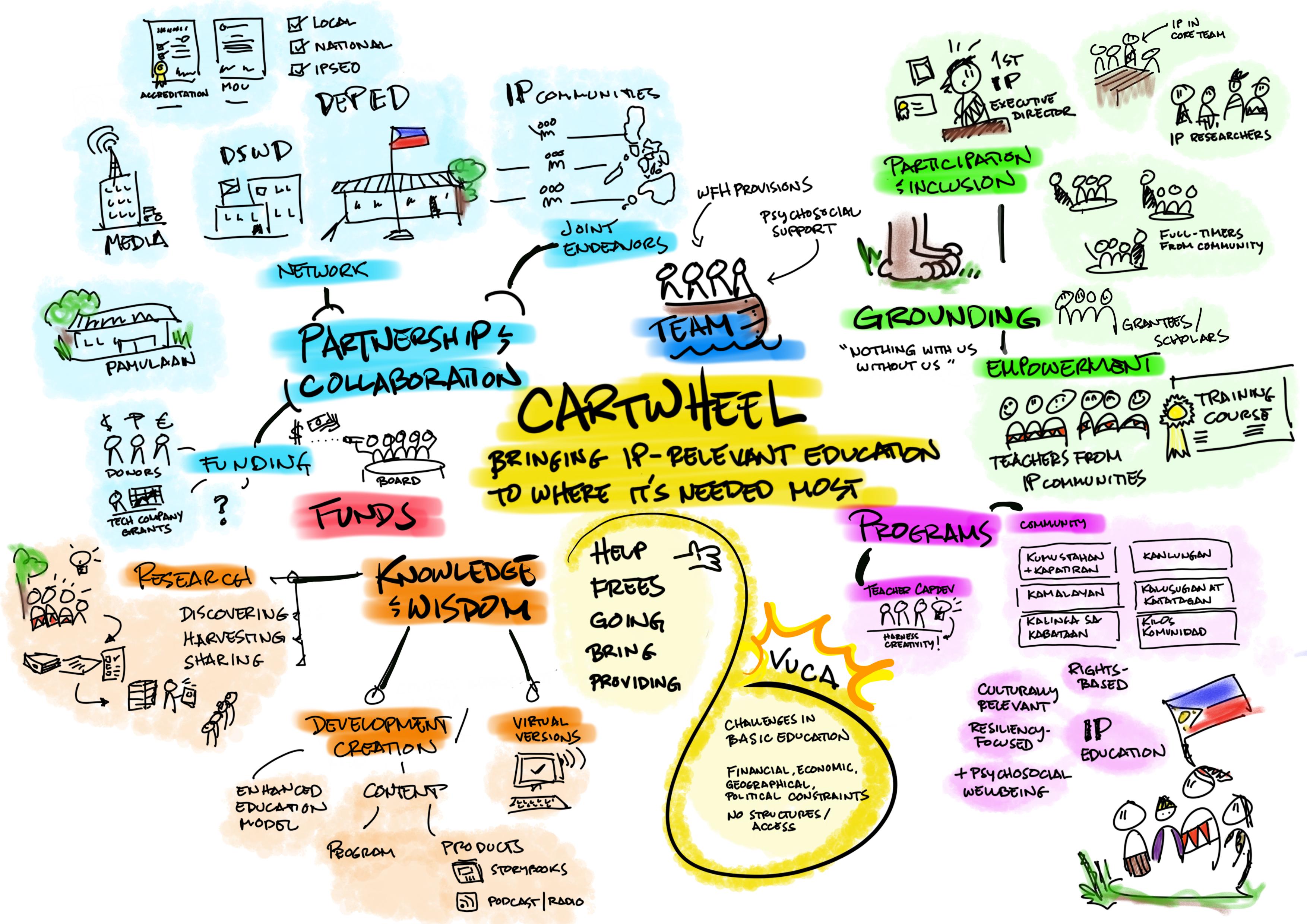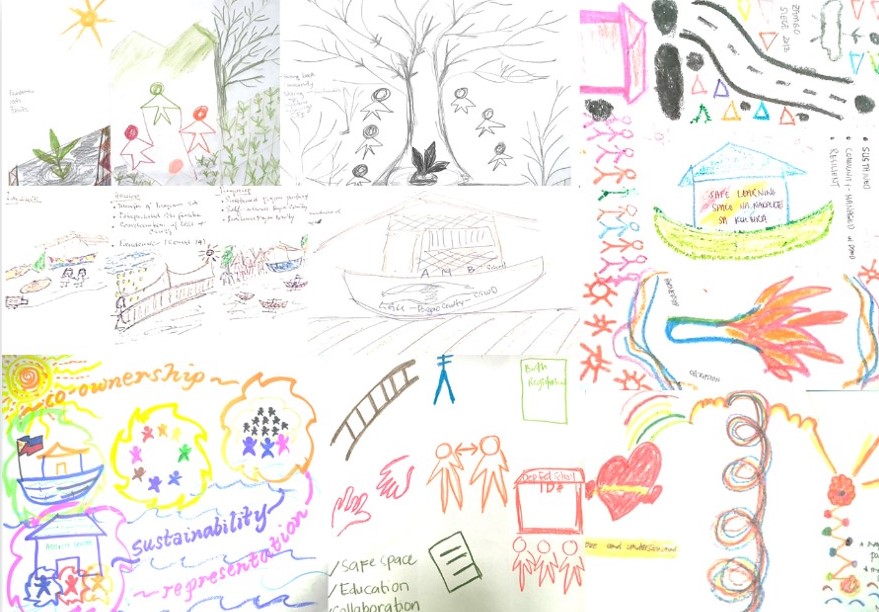ORGANIZATIONAL INSCAPING: CO-CREATING THE FUTURE THROUGH EXPRESSIVE CHANGE

“The best way to predict your future is to create it,” Abraham Lincoln was attributed to have said. In the face of the new realities posed by the COVID-19 pandemic, such wisdom has taken on a much deeper significance and resonance for Cartwheel Foundation, Inc. (“Cartwheel”).
As the Indigenous Peoples sector—along with the rest of the world—experiences unprecedented changes arising from the on-going crisis, Cartwheel realizes that it must evolve as an organization, even as it remains true to its mission of nurturing the capacities of indigenous communities through culturally relevant education.
To make this possible, Cartwheel’s stakeholders—the Board of Trustees, the staff, its partner indigenous communities and institutional development partners—engaged in a continuing dialogue to collectively discern new ways of being and doing, for the organization to remain truly responsive to the needs of Indigenous Peoples, amid an increasingly volatile, uncertain, complex and ambiguous world.
Expressive Change
Throughout the months of the pandemic, the Inscaping approach based on expressive change became the foundation of the Cartwheel Team’s and its various stakeholders’ sustained connection with each other. Inscaping is the social innovation practice of surfacing the inner experiences of organizational members during the normal course of work to shape and guide the organization (Nilsson and Paddock, 2013). It proposes that “the best way to create deep and lasting change in the world is to begin embodying it, in the daily lives of our organizations (Nilsson and Paddock, 2013).”
Cartwheel seeks to live out an approach that is expressive of the future that it would like to create by taking inspiration from practices that have helped its partner indigenous communities cope in times of adversity, namely: (i) community dialogue and (ii) cultural artforms (i.e., traditional songs, dances and visual art expressions that draw from indigenous heritage). For the Cartwheel Team, this translates to providing spaces for conversation, and integrating expressive arts into its practice.
Holding safe spaces for conversation. Since the beginning of the community quarantine, Cartwheel sought to prioritize providing time and space for those involved in the organization’ mission to express their needs, sentiments and perspectives. This also meant having to learn to leverage digital platforms and communication modalities. This resulted to a series of conversations that happened through team reflection sessions, “kumustahan” (check-in) and consultation with community teachers, alignment meetings with development partners, and organizational reflection and visioning sessions with the Board and other key stakeholders.
Harnessing the value of the expressive arts. The integration of arts-based activities in conversations and learning opportunities that took place in the digital space helped Cartwheel’s stakeholders to nurture the spirit of interconnectedness even while physically distant from each other. Through the expressive arts, discussions have become more interactive and engaging, facilitating openness and creativity in the exchange among participants. In this way, Cartwheel’s stakeholders were able to deepen their attunement to each other and widen their experience of a shared space beyond the limitations set by the frames of the digital screen.
Collectively, these practices helped build a sense of a shared journey among members of the Cartwheel family—bridging proverbial distances in this time of the pandemic.
Co-creating the Future
While COVID-19 has posed numerous challenges to Cartwheel and its partner communities, it also has become an accelerator for positive change and innovation—an opportunity that has spurred Cartwheel’s stakeholders to reimagine possibilities for the Foundation and co-create ways forward amid an uncertain future.

Visual representation of the Cartwheel Board of Trustees’ aspirations for the Foundation (August 2020) | Art by Alwin Macalalad
Through the reflective and dialogic journey it has engaged in, Cartwheel’s leadership is able to reaffirm the Foundation’s commitment to Indigenous Peoples’ Education as central to its mission, in ways that are culturally-relevant, rights-based and resilience-focused. It, nevertheless, recognizes that, in the fulfillment of its mission, new perspectives and development approaches need to be continually explored and manifested, to sustain the Foundation’s responsive action vis-à-vis the ever-changing social landscape that it now finds itself in.
In all of this, Cartwheel looks to the wisdom of Indigenous Peoples, from whom there is much to learn as the world seeks to weave new, life-giving narratives into the fabric of society. Cartwheel strives for its continuing conversations to be truly expressive of the aspirations of its indigenous partners, to enable the co-creation of a future that honors their rights and heritage as essential to nation-building.
—
Reference:
Nilsson, W. & Paddock, T. (2014). Social innovation from inside out. Retrieved 11/16/17 from https://ssir.org/articles/entry/social_innovation_from_the_inside_out#

